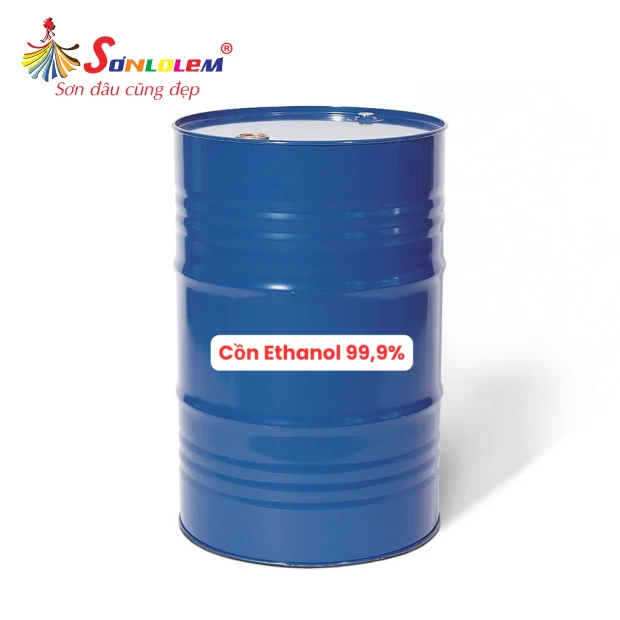

Ethanol 99.9%
Ethanol 99.9%
Product information:
Ethanol 99.9%
Ethanol, also known as ethyl alcohol, ethylic alcohol, grain alcohol, or simply alcohol, is a chemical compound with the molecular formula C₂H₅OH.
Ethanol (EtOH) is present in alcoholic beverages (beer, wine, spirits) when diluted. Industrial ethanol 99.9% is used as a topical agent to prevent skin infections, in pharmaceutical preparations (e.g., rubbing compounds, lotions, tonics, colognes), cosmetics, and perfumes.
Applications of Industrial Ethanol 99.9%
- As a fuel: It can be found in fuel blends labeled as ethanol-blended fuel.
- As an industrial solvent: It is used for dissolving fats, oils, waxes, resins, and hydrocarbons.
- Chemical production: It is used in the manufacture of various chemical compounds, lacquers, plastics, rubber accelerators, rubber products, sprays, mouthwashes, soaps, cleaning solutions, polishes, coatings, dyes, inks, adhesives, preservatives, pesticides, and explosives.
- Other uses: It serves as a dehydrating agent, a medium for yeast cultivation, and is used in both human and veterinary medicine.
Technical Specifications of Ethanol 99.9%
- Name: Ethanol
- CAS Number: 64-17-5
- Molecular Formula: C₂H₆O
- Synonyms: Ethyl alcohol
Physical Properties of Ethanol 99.9%
Industrial ethanol 99.9% is a clear, colorless liquid with a characteristic pleasant odor and a burning taste. It is highly flammable. Ethanol is widely used as a solvent for dissolving other chemicals and mixes easily with water and many organic liquids. It is considered a volatile organic compound by national pollution inventories.
- Melting Point: -114°C
- Boiling Point: 78.5°C
- Density (Ethanol 96%): 0.8
- Flash Point: 9-11°C
Toxicity of Industrial Ethanol 99.9%
Exposure to ethanol may cause eye, skin, and nose irritation, drowsiness, and headaches. Other symptoms may include dizziness, nausea, mental euphoria or depression, vomiting, flushing, and coma. High concentrations of ethanol vapors may lead to eye, skin, and respiratory irritation, loss of coordination (ataxia), drowsiness, stupor (unconsciousness), cognitive impairment, and lack of coordination. Severe exposure may cause low inhibition, dizziness, shallow breathing, unconsciousness, and even death. Ethanol is harmful when ingested, inhaled, or absorbed through the skin.
Prolonged exposure may cause dry, cracked, peeling, and itchy skin. Industrial ethanol 96% can weaken the central nervous system, affect vision, and irritate the upper respiratory tract (nose and throat), potentially causing headaches, fatigue, and difficulty concentrating.
Consumption of ethanol during pregnancy can harm the fetus, leading to miscarriages, developmental issues, or birth defects, known as “fetal alcohol syndrome”. Chronic ethanol consumption can cause liver cirrhosis, neurological damage, and glandular dysfunction in humans.
Industrial ethanol 99% may cause genetic mutations (genetic changes). However, ethanol is rapidly oxidized in the body into carbon dioxide and water, with no cumulative toxic effects. Concentrations below 1,000 ppm generally do not show toxic effects.
- Routes of Entry: Ethanol can enter the body through ingestion, inhalation, or skin absorption.
- Exposure Sources: Ethanol exposure may occur from consuming alcoholic beverages, using consumer products containing ethanol, or working in industries that use or produce ethanol.
- Environmental Presence: Ethanol exists in low levels in the environment as a natural byproduct of plant fermentation.
Ethanol 99.9% Price
On the market, the price of ethanol 99.9% ranges from 24,000 – 32,000 VND per liter, depending on the concentration and order quantity.
Advantages of Ethanol 99.9% (Ethanol 96%)
Industrial ethanol is produced from agricultural residues such as straw, non-food lignocellulosic materials, and waste.
Producing ethanol from cellulosic materials, waste, or residues requires breaking down the raw materials into fermentable sugars. This process utilizes advanced technologies, including enzymatic hydrolysis and pretreatment. Once this stage is completed, the remaining production steps are similar to those used in ethanol production from agricultural crops.
Advanced ethanol feedstocks often come from the non-edible parts of crops, such as straw, corn cobs, husks, and dedicated energy crops. The biodegradable fraction of municipal solid waste is also considered a promising raw material.
Processing these raw materials requires high-tech facilities, cutting-edge enzyme and yeast technology, and skilled workers.
Ethanol derived from cellulose, waste, or residual materials has the same chemical properties as any other ethanol. When used as an alternative fuel, it is commonly referred to as second-generation ethanol.


 Tiếng Việt
Tiếng Việt